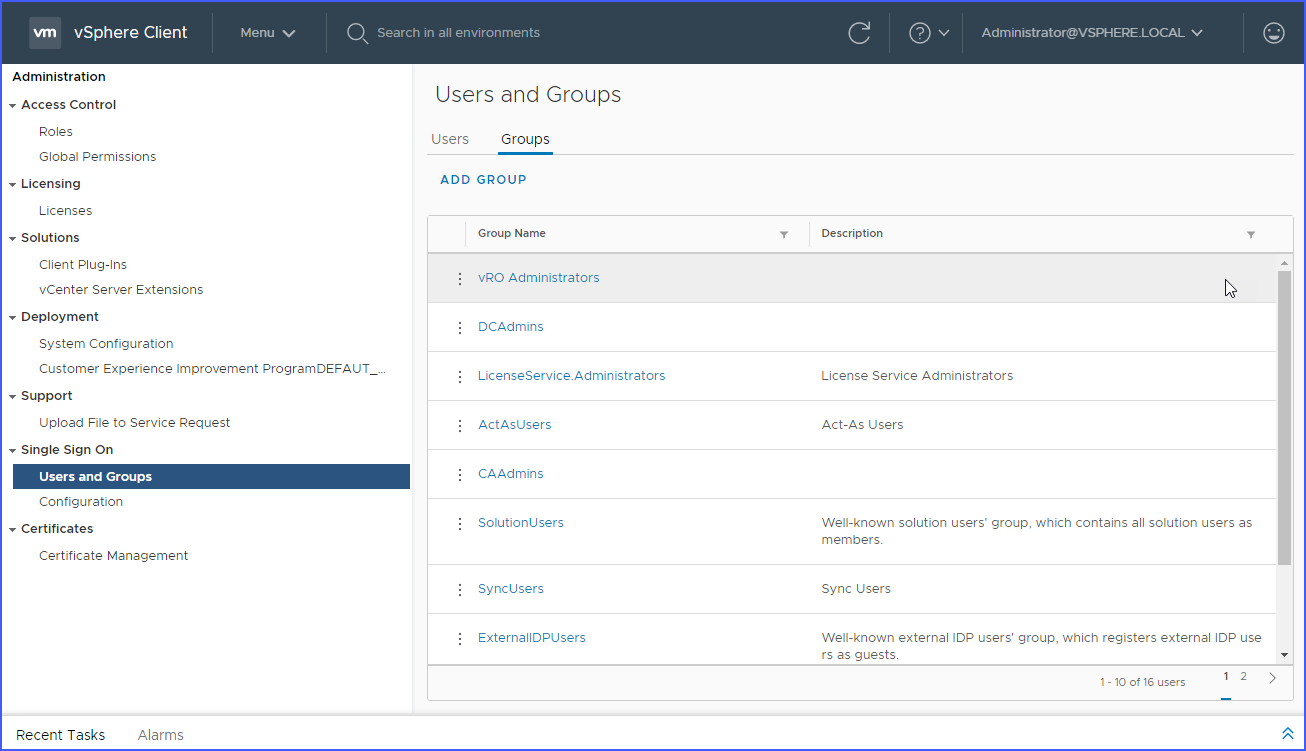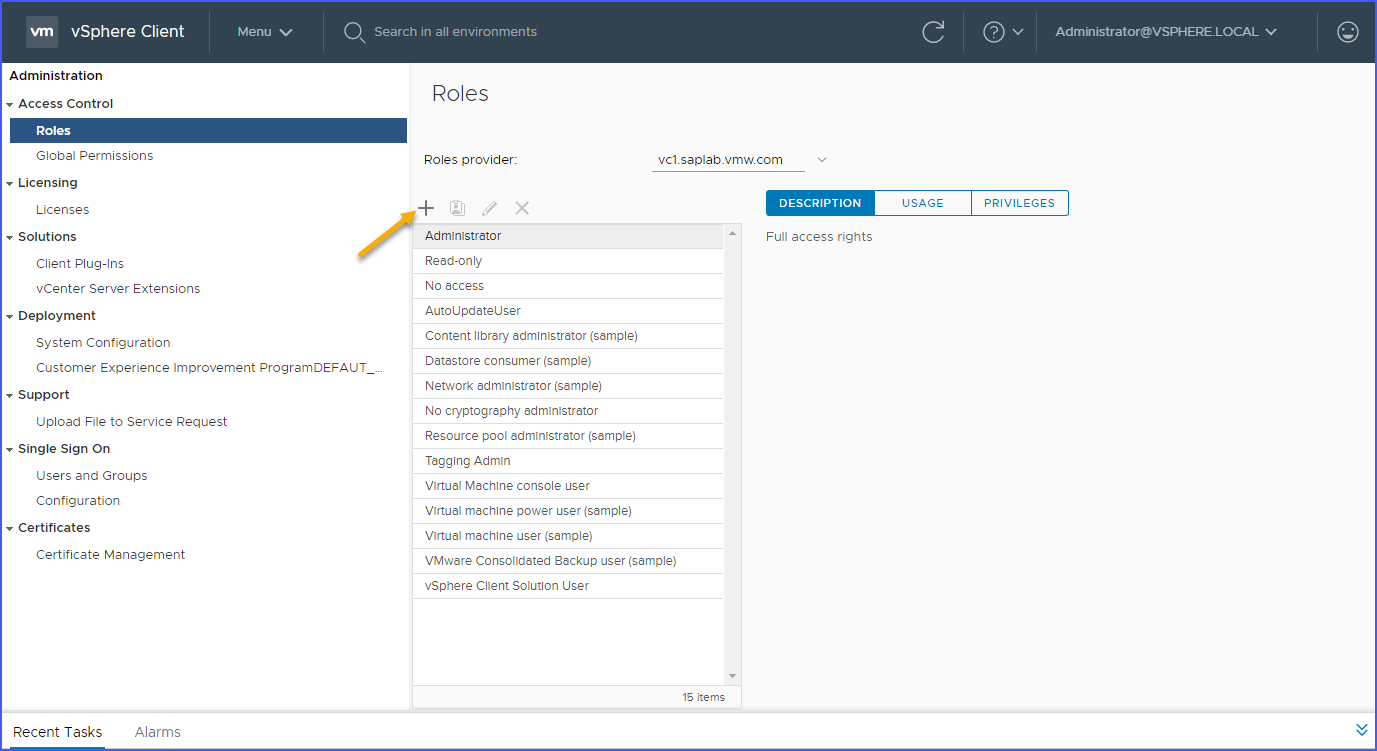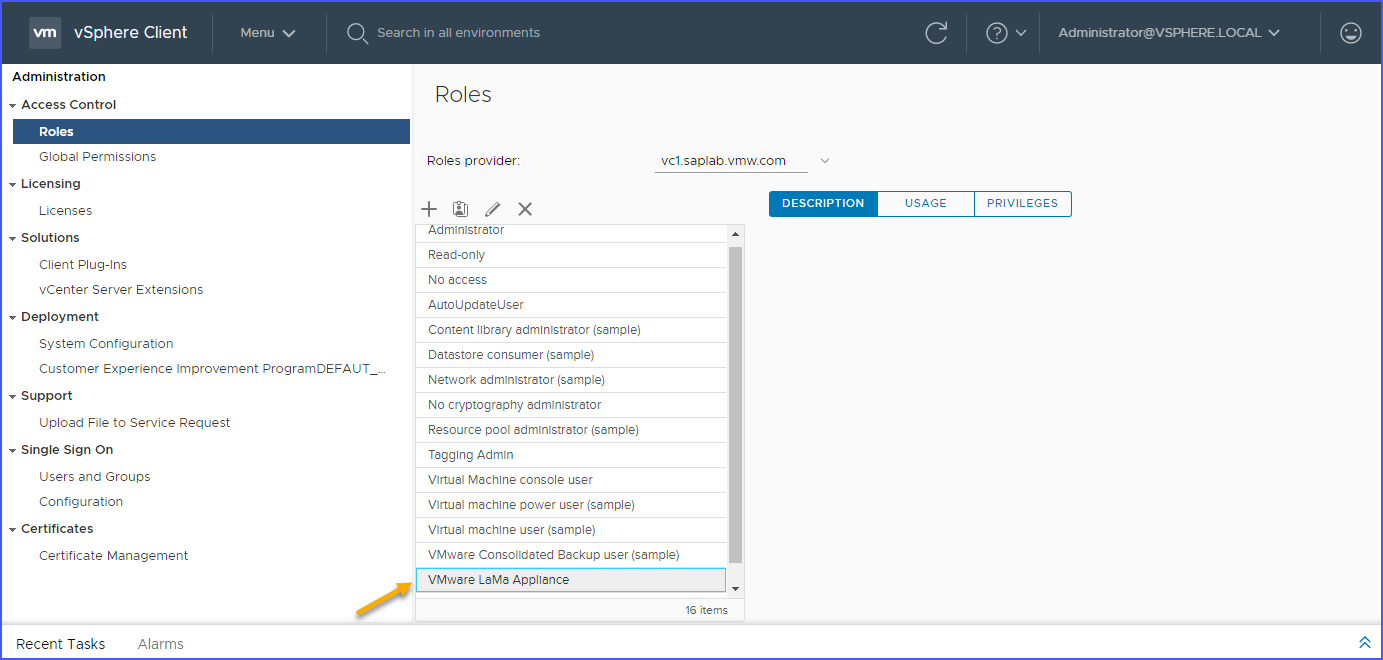In order to run vCenter operations from VLA workflows it is necessary to add a new user to VMware vRealize Orchestrator administrators group. Thus it will have administrator access to the VMware vRealize Orchestrator Server and can perform general administration tasks there. This group name is set in the Admin group text box during vRealize Orchestrator authentication provider configuration in vRealize Orchestrator Control Center.
vCenter Single Sign-On supports storing the user and group data in Active Directory or locally to the operating system of the machine where vCenter Single Sign-On is installed. If your vCenter Server has been associated with an Active Directory Server, create a user and add the user to the VMware vRealize Orchestrator administrators group there, skip steps 3-11 in this procedure and perform the rest of the steps to configure the new user access to the vSphere inventory.
Procedure
Results
You have successfully created a single user for the whole setup, added it to the VMware vRealize Orchestrator administrators group and added required permission for this user.









